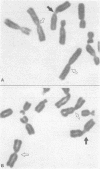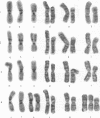Abstract
Four cases of Turner's syndrome are presented in which an apparent X isochromosome i(Xq) has been found to possess two regions of centromeric heterochromatin. It is suggested that these chromosomes were isodicentric structures capable of functioning as monocentric elements as a result of the inactivation of one centromere. The prevalence of mosaicism is believed to be a consequence of the dicentric nature of these chromosomes, and it is considered possible that a high proportion of X isochromosmes are structurally dicentric. Banding patterns showed that the exchange site involved in the formation of the dicentric chromosome was different in at least three of the cases.
Full text
PDF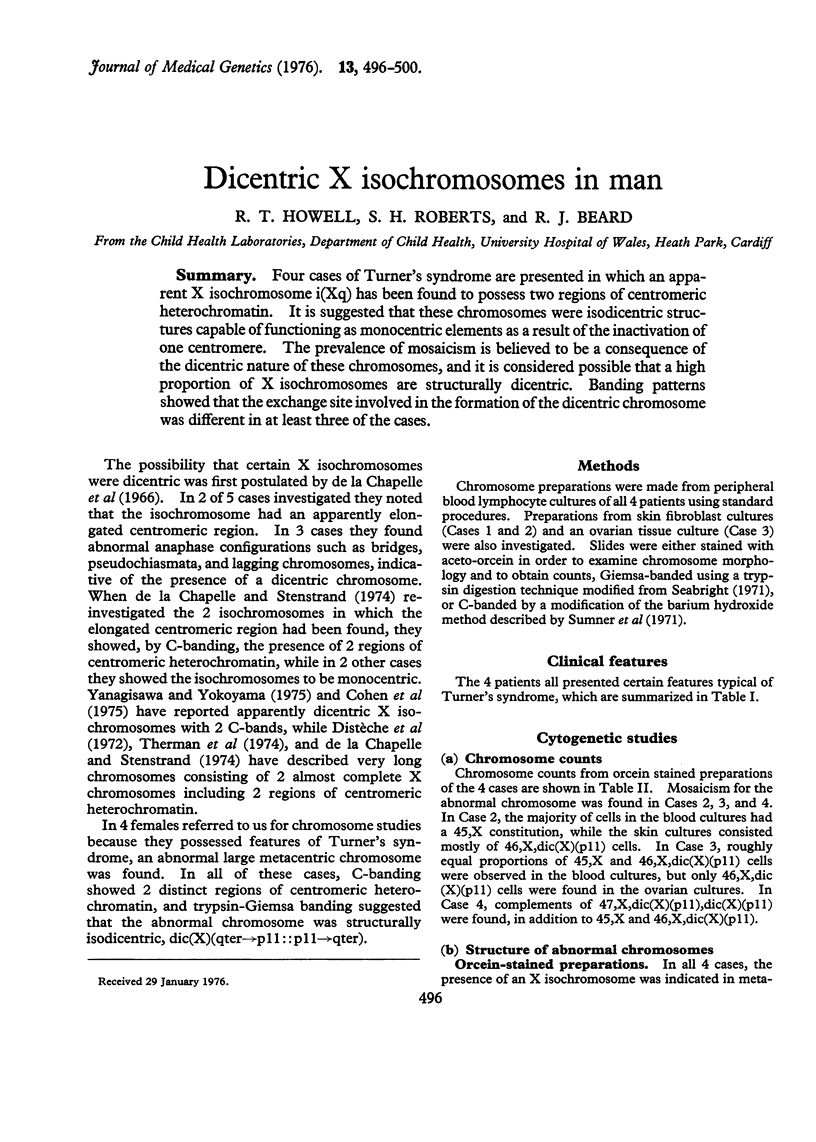
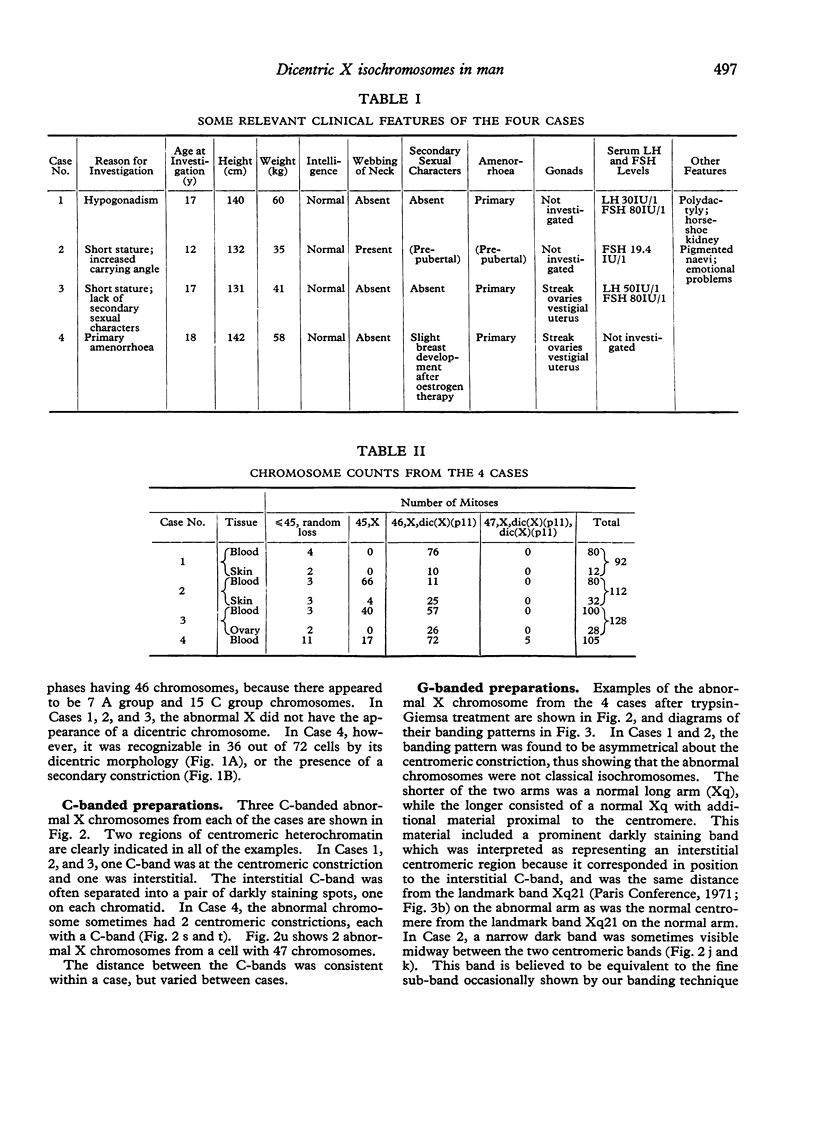
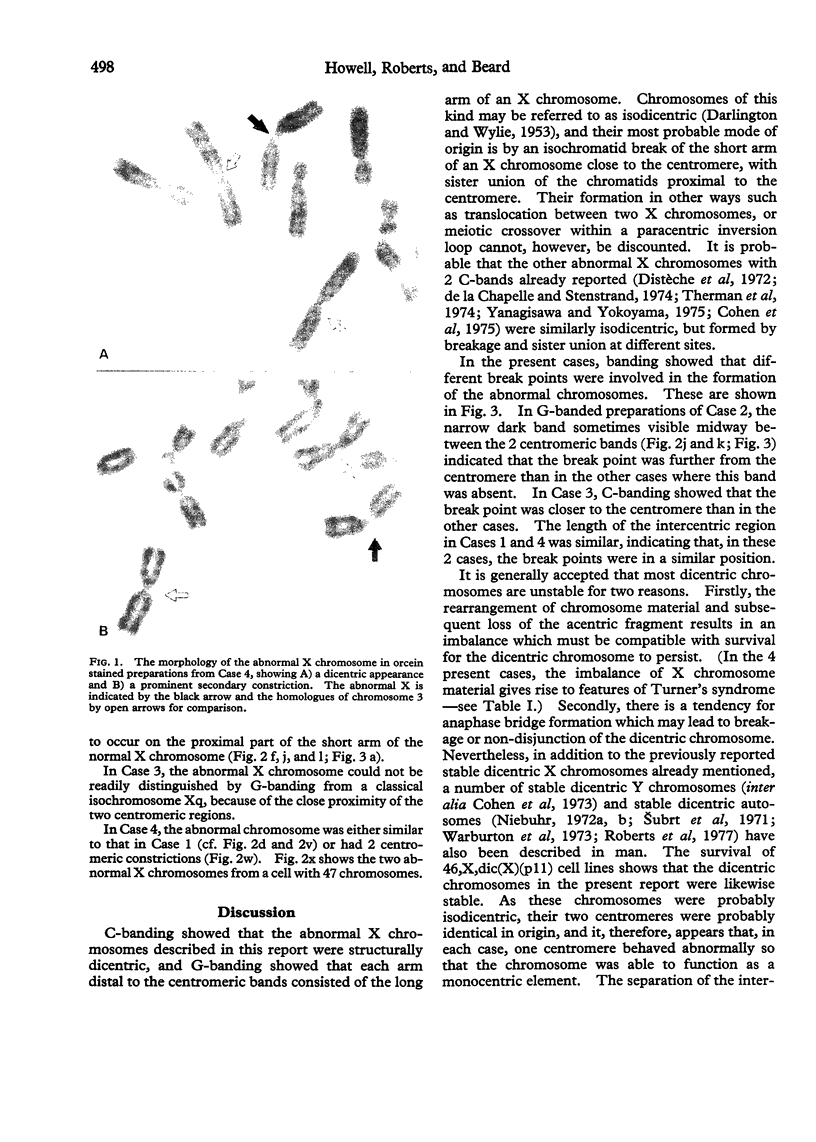
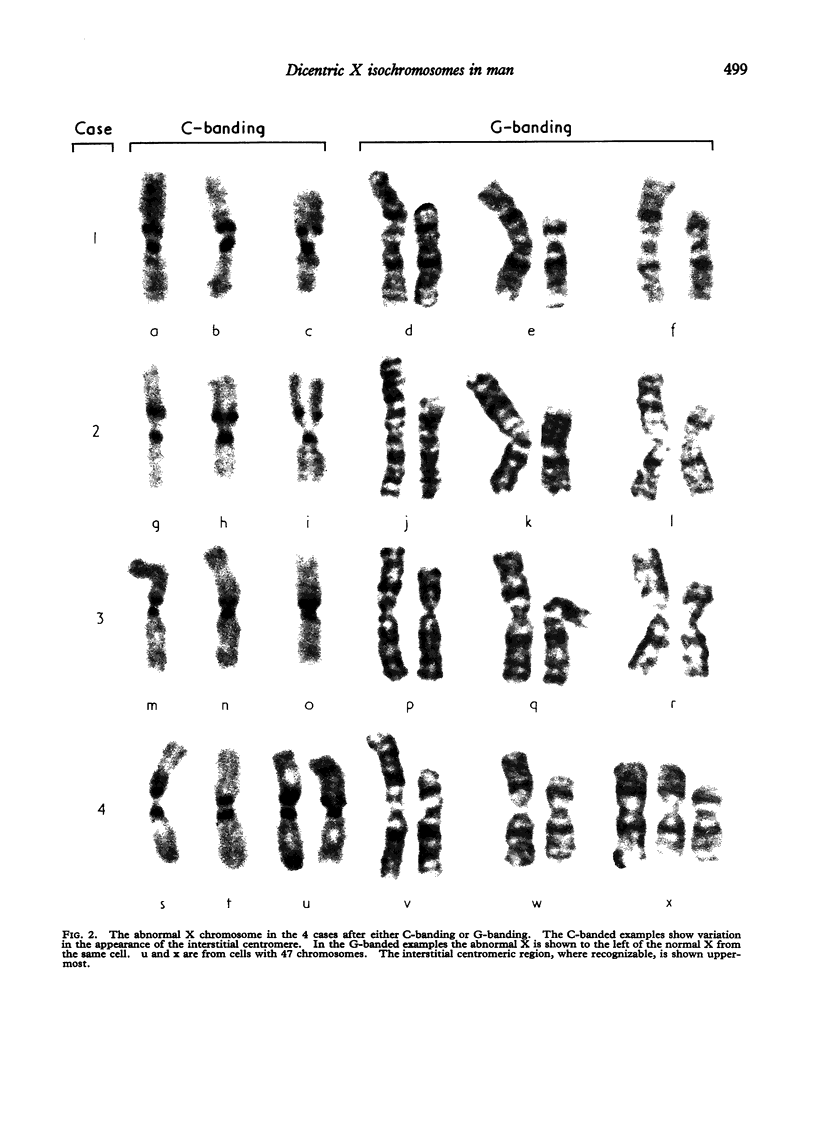
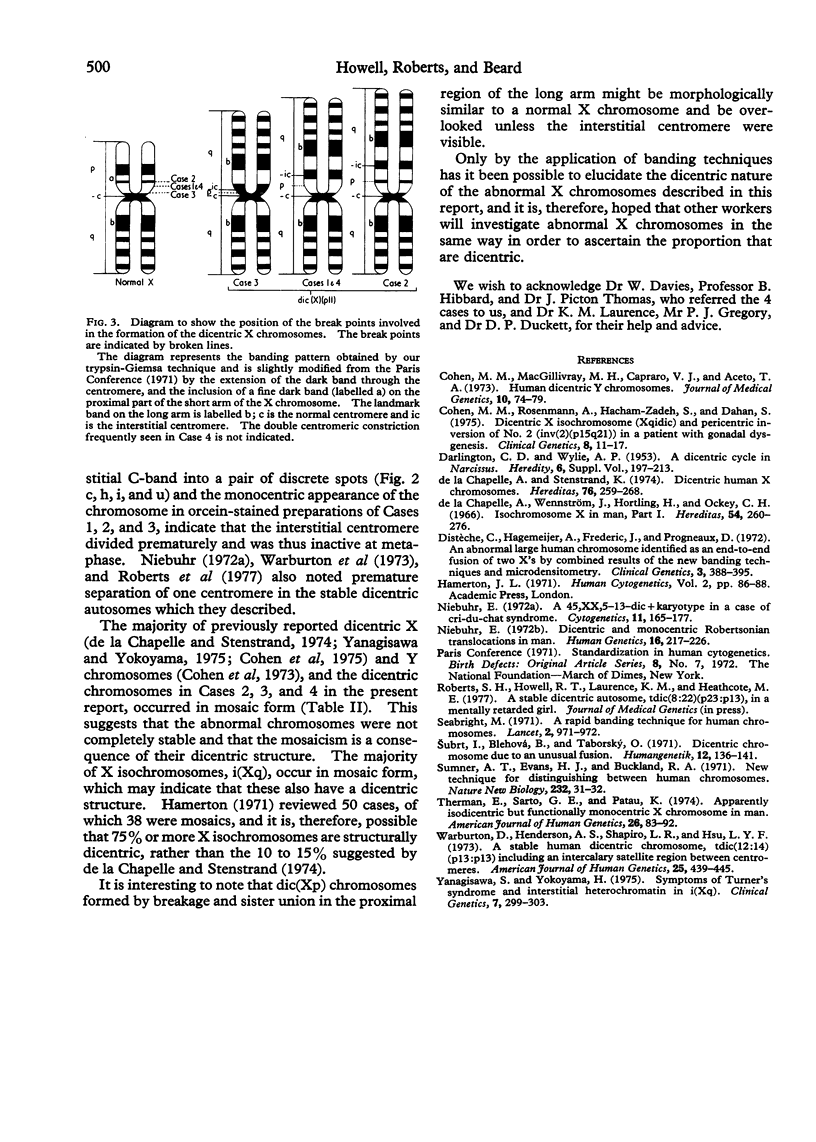
Images in this article
Selected References
These references are in PubMed. This may not be the complete list of references from this article.
- Cohen M. M., MacGillivray M. H., Capraro V. J., Aceto T. A. Human dicentric Y chromosomes. Case report and review of the literature. J Med Genet. 1973 Mar;10(1):74–79. doi: 10.1136/jmg.10.1.74. [DOI] [PMC free article] [PubMed] [Google Scholar]
- Cohen M. M., Rosenmann A., Hacham-Zadeh S., Dahan S. Dicentric X-isochromosome (Xqi dic) and pericentric inversion of No. 2 [inv(2) (p15 q21)] in a patient with gonadal dysgenesis. Clin Genet. 1975 Jul;8(1):11–17. doi: 10.1111/j.1399-0004.1975.tb01948.x. [DOI] [PubMed] [Google Scholar]
- De la Chapelle A., Stenstrand K. Dicentric human X chromosomes. Hereditas. 1974;76(2):259–268. doi: 10.1111/j.1601-5223.1974.tb01344.x. [DOI] [PubMed] [Google Scholar]
- De la Chapelle A., Wennström J., Hortling H., Ockey C. H. Isochromosome-X in man. I. Hereditas. 1966;54(3):260–276. doi: 10.1111/j.1601-5223.1966.tb02021.x. [DOI] [PubMed] [Google Scholar]
- Distèche C., Hagemeijer A., Frederic J., Progneaux D. An abnormal large human chromosome identified as an end-to-end fusion of two X's by combined results of the new banding techniques and microdensitometry. Clin Genet. 1972;3(5):388–395. doi: 10.1111/j.1399-0004.1972.tb01472.x. [DOI] [PubMed] [Google Scholar]
- Niebuhr E. A 45,XX,5-,13-,dic+ karyotype in a case of cri-du-chat syndrome. Cytogenetics. 1972;11(3):165–177. doi: 10.1159/000130186. [DOI] [PubMed] [Google Scholar]
- Niebuhr E. Dicentric and monocentric Robertsonian translocations in man. Humangenetik. 1972;16(3):217–226. doi: 10.1007/BF00273467. [DOI] [PubMed] [Google Scholar]
- Seabright M. A rapid banding technique for human chromosomes. Lancet. 1971 Oct 30;2(7731):971–972. doi: 10.1016/s0140-6736(71)90287-x. [DOI] [PubMed] [Google Scholar]
- Subrt I., Blehová B., Táborský O. Dicentric chromosome due to an unusual fusion. Humangenetik. 1971;12(2):136–141. doi: 10.1007/BF00291469. [DOI] [PubMed] [Google Scholar]
- Sumner A. T., Evans H. J., Buckland R. A. New technique for distinguishing between human chromosomes. Nat New Biol. 1971 Jul 7;232(27):31–32. doi: 10.1038/newbio232031a0. [DOI] [PubMed] [Google Scholar]
- Therman E., Sarto G. E., Patau K. Apparently isodicentric but functionally monocentric X chromosome in man. Am J Hum Genet. 1974 Jan;26(1):83–92. [PMC free article] [PubMed] [Google Scholar]
- Warburton D., Henderson A. S., Shapiro L. R., Hsu L. Y. A stable human dicentric chromosome, t dic (12;14)(p13;p13) including an intercalary satellite region between centromeres. Am J Hum Genet. 1973 Jul;25(4):439–445. [PMC free article] [PubMed] [Google Scholar]
- Yanagisawa S., Yokoyama H. Symptoms of Turner's syndrome and interstitial heterochromatin in i(Xq). Clin Genet. 1975 Apr;7(4):299–303. doi: 10.1111/j.1399-0004.1975.tb00332.x. [DOI] [PubMed] [Google Scholar]



